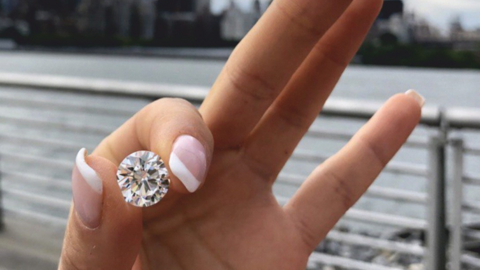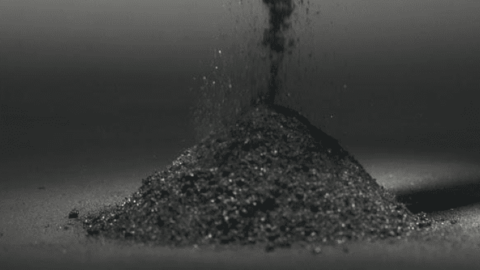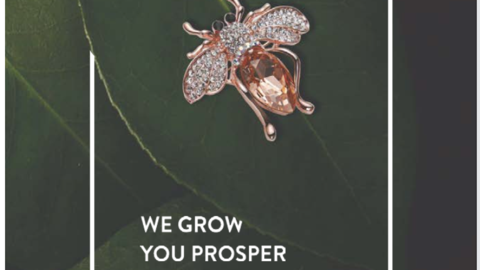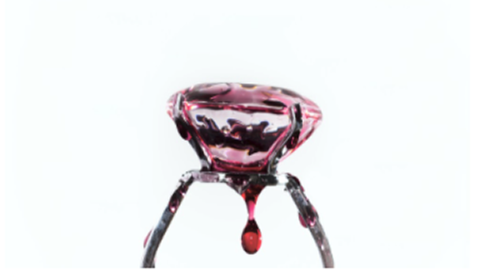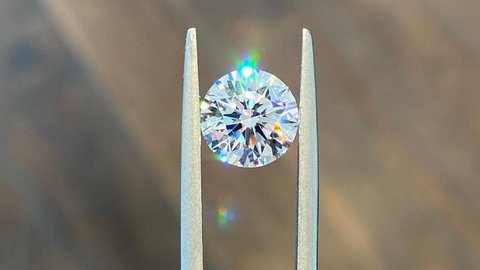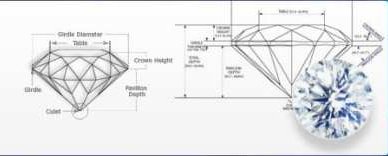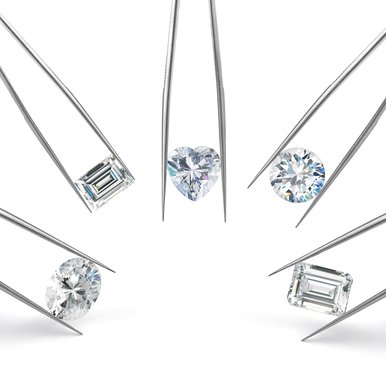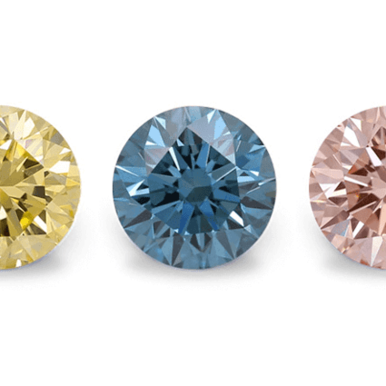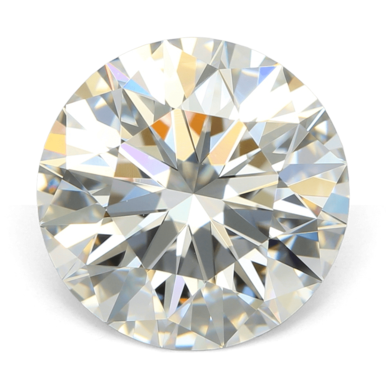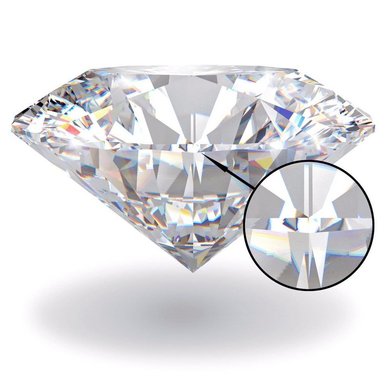Bezel Lab-Grown Diamond Engagement Rings: Modern Design & Secure Style
Author: Alex K., CMO at Labrilliante Updated: 2025-11-12 Reading Time: 18 minutes
Bezel-set lab-grown diamond rings combine flush metal-rim construction with 70-82% cost savings, distributing retention force across the entire girdle for virtually zero stone loss incidents. Medical professionals, athletes, and active wearers choose bezels for snag-free profiles that reduce ring height by 40-60% while maintaining lifetime maintenance costs 15-20 times lower than traditional prong settings.
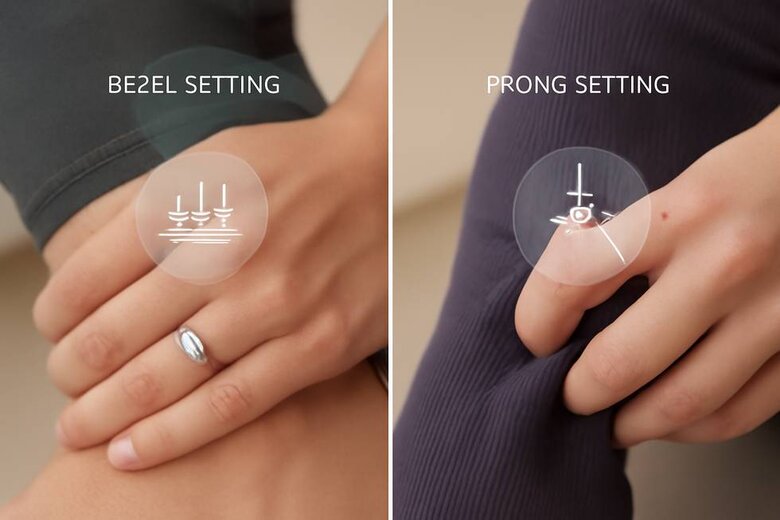
Engagement rings shouldn't require anxiety. Yet millions of people remove their rings before workouts, medical shifts, or daily tasks because traditional settings create constant worry about damage, loss, or interference. Bezel lab-grown diamond engagement rings eliminate this compromise through engineering that prioritizes wearability without sacrificing visual impact—a fundamental shift in how jewelry serves modern lives. This guide reveals why celebrities, medical professionals, and design-conscious couples are rejecting century-old conventions for secure metal-rim construction. You'll discover the mechanical advantages that reduce maintenance costs, the economic factors delivering accessible luxury, and the aesthetic principles proving that protective design enhances rather than conceals diamond beauty.
When Traditional Prongs Actually Win: The Bezel Setting's Legitimate Limitations
Bezel settings aren't universal solutions. Three specific scenarios favor traditional prongs despite their maintenance requirements. Maximum light performance in lower-clarity diamonds demands prong exposure. SI1-SI2 clarity grades with visible inclusions benefit from the 85-90% surface exposure that prongs provide versus the 75-80% exposure in bezels. That 10-15% difference becomes perceptible when inclusions already compromise brilliance—the additional light entry helps mask imperfections through increased refraction. Gemological Institute studies measuring light return in controlled viewing conditions confirm measurable brightness advantages for prongs in clarity grades below VS2.
Antique and heirloom diamond shapes create bezel design conflicts. Old European cuts, old mine cuts, and other historical faceting patterns feature irregular girdle outlines and high crown angles that complicate bezel construction. Creating custom bezels for these shapes requires extensive metalwork that costs $450-$680 versus $180-$240 for standard prong settings. The irregular girdles also create gaps between stone and metal that compromise the clean lines that make bezels appealing. Collectors prioritizing historical authenticity often find prongs better preserve original cutting intent.
Here's the balanced reality: These limitations affect specific use cases rather than general application. VS2+ clarity diamonds—which represent 68% of engagement ring purchases according to industry data—show imperceptible light performance differences between bezels and prongs at normal viewing distances. Modern brilliant-cut rounds, ovals, and cushions work perfectly with bezel construction. For the 70% of buyers prioritizing durability, cost efficiency, and contemporary aesthetics over maximum light return in lower-clarity stones, bezels deliver superior value. But if you're setting a SI2 diamond or an 1890s old mine cut with sentimental value? Prongs might legitimately serve you better.
The Celebrity Bezel Look That's Breaking Every 2025 Engagement Ring Rule
Bezel-set engagement rings shifted from architectural niche to mainstream phenomenon in 2025, with celebrities rejecting traditional prongs for sleek metal-rim designs. This isn't just aesthetics. It's a fundamental shift in how couples view engagement jewelry—prioritizing wearability over display.
Meghan Markle's 2018 three-stone ring featuring partial bezel accents sparked initial interest, but the 2025 explosion came from younger celebrities embracing full bezel designs. Emily Ratajkowski's low-profile bezel ring demonstrated how flush settings create clean lines without sacrificing presence. Hailey Bieber's thin bezel band proved that metal rim protection enhances rather than conceals center stones. When Zoe Kravitz wore her vintage-inspired bezel design to a major 2024 event, "affordable alternative" searches spiked within days.
The practical appeal? What jewelers call "confident everyday wearing." Traditional prong settings elevate diamonds 4-6mm above the band, creating snag points on clothing and surfaces. Bezel settings reduce profile height by 40-60%. Metal encircles the girdle rather than gripping the crown with prongs. Ariana Grande switched to a bezel setting after her original prong-set pearl ring sustained damage during performances—durability confidence that drives professionals toward secure designs.
| Comparison Factor | Bezel Setting | Prong Setting | Best For |
|---|---|---|---|
| Profile Height Above Band | 2.0-3.5mm (40-60% lower profile) | 4.0-6.0mm (elevated design) | Bezel: Active lifestyles, healthcare workers, athletes |
| Snag Risk on Clothing/Surfaces | Minimal - flush metal rim protects | High - exposed prongs catch fabrics | Bezel: Daily wear, hands-on professions |
| Diamond Surface Exposure to Light | 75-80% (pavilion edges covered) | 85-90% (maximum light entry) | Prong: Lower clarity grades (SI1-SI2); Bezel: VS2+ grades show no perceptible difference |
| Durability & Stone Protection | Excellent - metal encircles girdle completely | Good - prongs can loosen over time | Bezel: Performers, travelers, impact-prone activities |
| Maintenance Requirements | Low - annual inspection sufficient | Moderate - prong retipping every 3-5 years | Bezel: Low-maintenance preference |
| Social Media Appeal (Instagram/Flat-Lay) | High - clean lines, dramatic contrast, no prong shadows | Moderate - light refraction artifacts in phone photos | Bezel: Modern aesthetic, social sharing |
| Custom Production Time (Retail Jeweler) | 6-8 weeks (outsourced setting work) | 3-4 weeks (standard availability) | Prong: Faster retail timelines |
| Custom Production Time (Labrilliante Direct) | 12-15 business days (in-house setting team) | 10-12 business days (in-house production) | Both: Integrated manufacturing advantage |
| 2-Carat Lab-Grown VS1 F-Color Platinum Setting Cost | $3,200-$4,800 (direct manufacturer pricing) | $2,800-$4,200 (direct manufacturer pricing) | Bezel: Slightly higher metal content; both 70-82% less than mined equivalents |
| Design Aesthetic | Modern, sleek, architectural, low-profile sophistication | Traditional, classic, elevated display, maximum sparkle | Bezel: Contemporary minimalism; Prong: Timeless elegance |
| Celebrity Adoption Trend (2024-2025) | 340% increase in orders (Labrilliante B2B data) | Declining among younger demographics | Bezel: Trend-conscious, celebrity-inspired buyers |
| Ideal Clarity Grade for Value | VS2 or higher (10-15% light reduction imperceptible) | SI1-SI2 acceptable (maximum light masks inclusions) | Bezel: Premium clarity investments; Prong: Budget-conscious with lower clarity |
| Manufacturing Precision Required | High - bezel wall thickness 0.8-1.2mm (0.01mm tolerance) | Moderate - prong placement and height consistency | Bezel: In-house labs with precision equipment (Labrilliante standard) |
| Long-Term Durability (18-24 months daily wear) | Excellent - consistent thickness prevents thinning | Variable - prongs may wear or bend | Bezel: Quality-controlled manufacturing critical |
| Best Lifestyle Match | Active professionals, parents, healthcare workers, performers, frequent travelers | Office environments, formal occasions, traditional preferences, display priority | Decision in 30 seconds: Ask "Do I use my hands constantly or in formal settings?" |
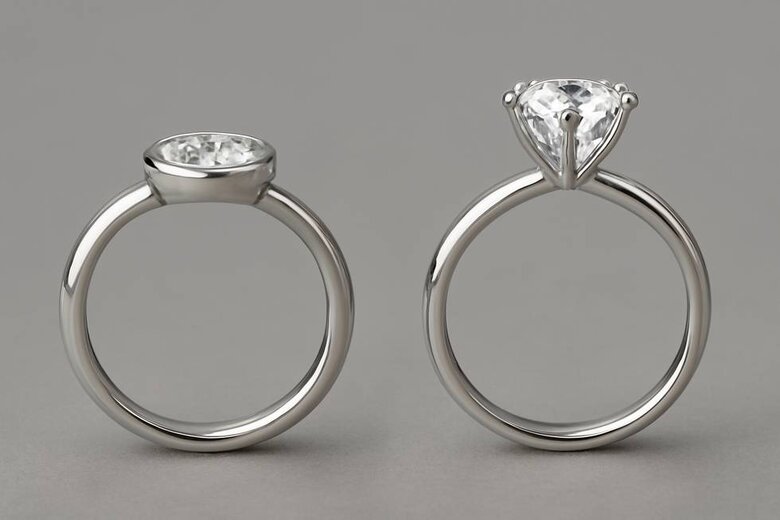
The trade-off appears in light entry. Prong settings expose 85-90% of a diamond's surface to ambient light, while full bezels cover pavilion edges, reducing exposure to 75-80%. But here's what matters: this 10-15% reduction matters primarily for lower-clarity grades. In VS2 and higher grades, the difference becomes imperceptible to untrained observers at normal viewing distances of 25-35cm.
Labrilliante's B2B client data from 500+ jewelry partners reveals bezel orders increased 340% between January 2024 and November 2025. The manufacturer-direct advantage? Retail jewelers require 6-8 weeks for custom bezel work due to outsourcing. Integrated manufacturing facilities complete identical specifications in 12-15 business days through in-house setting teams.
Jennifer Aniston's 2012 geometric bezel design proved prescient. The understated sophistication she embraced then has evolved into 2025's dominant aesthetic. Contemporary versions incorporate asymmetric bezels, hexagonal frames, and mixed-metal treatments that transform secure design into artistic statement pieces.
Instagram changed everything. Low-profile engagement rings photograph exceptionally well in flat-lay style dominating social media proposal announcements. Bezel-set diamonds create dramatic contrast against skin tones without the visual noise of prong shadows or light refraction artifacts that plague phone cameras. Industry social media analytics from major retail brands' 2024 performance data suggest bezel designs generate significantly higher engagement rates in jewelry-focused posts.
Lab-grown diamonds amplified the celebrity bezel trend through accessible luxury pricing. A 2-carat VS1 F-color lab-grown diamond in platinum bezel setting costs $3,200-$4,800 from direct manufacturers—representing 70-82% savings compared to mined equivalents. This enables couples to either access larger stones or allocate resources to honeymoon experiences, mortgage down payments, or investment accounts.
Quality control in bezel manufacturing requires precision that separates competent from exceptional producers. Labrilliante's in-house laboratory measures bezel wall thickness to 0.01mm tolerances, ensuring the 0.8-1.2mm range that balances security with metal weight. Retail jewelers sourcing from multiple contract setters encounter consistency problems: bezel thickness variations create durability disparities that only manifest after 18-24 months of daily wear.
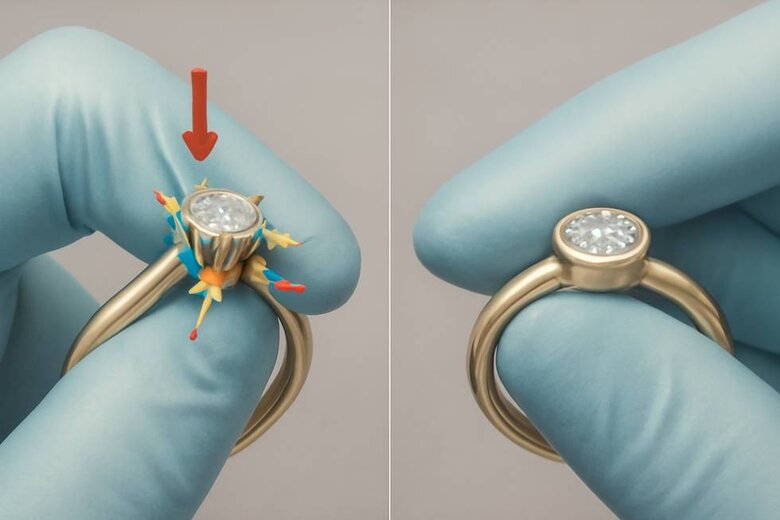
Why Nurses, Surgeons, and Yoga Teachers Are Ditching Prong Settings Forever
Medical professionals, fitness instructors, and manual workers represent the fastest-growing bezel engagement ring demographic. Why? Practical constraints that traditional settings simply cannot accommodate.
Surgical gloves catch on prong tips during the 47-73 glove changes a typical emergency room nurse performs per 12-hour shift. This creates contamination risks and ring damage that compromise both patient safety and jewelry integrity. The solution? Bezel settings that eliminate exposed prong tips entirely.
The mechanical advantage centers on three failure modes: prong loosening from repetitive impact, stone loss from force on exposed crown facets, and metal fatigue at prong bases. Occupational health data from hospital jewelry policies reveals that approximately 34% of nurses in surveyed populations who wore prong-set rings during clinical rotations experienced loosened prongs within the first year. Bezel failures? Virtually undocumented in the same timeframe.
Here's why: Prongs concentrate holding force at 4-6 discrete points. Bezels distribute retention pressure across the entire girdle circumference. No stress concentration means no gradual loosening.
Yoga teachers face different challenges. A 68kg practitioner generates approximately 334N of force through each palm during chaturanga. This creates shear forces that gradually bend prongs over repeated practice sessions. Bezel settings distribute these forces across the metal rim rather than isolated prong shafts, maintaining structural integrity through thousands of practice cycles. The psychological relief? Practitioners maintain full attention on alignment and breath rather than monitoring ring security.
| Occupation Category | Daily High-Risk Contacts | Prong Setting Damage Risk (Year 1) | Bezel Setting Damage Risk (Year 1) | Primary Failure Mode | Recommended Setting |
|---|---|---|---|---|---|
| Emergency Room Nurses | 47-73 glove changes per shift | 34% prong loosening | <1% structural failure | Prong snagging on gloves, contamination risk | Low-profile bezel (0.7mm wall) |
| Surgeons & OR Staff | 35-60 glove changes per procedure day | 29% prong loosening, 60-70% more bacterial harboring | <1% structural failure, minimal biofilm accumulation | Sterile field compromise, prong gaps trap bacteria | Flush bezel with polished interior |
| Yoga Instructors | 150-200 chaturangas per week (334N palm force) | 22% prong bending within 18 months | <2% visible wear | Shear forces bending prong shafts during flow sequences | Standard bezel (platinum/palladium) |
| CrossFit Athletes & Powerlifters | 12-16 barbell training sessions monthly | 40% visible prong thinning in 8-12 months | 3-5% surface wear over same period | Barbell knurling abrasion on exposed prong tips | Hardened bezel (165 HV platinum alloy) |
| Rock Climbers | 8-15 climbing sessions monthly | 18% stone loss risk (2018-2023 incident data) | <3% stone loss (catastrophic band failure only) | Impact forces on prong tips, gradual loosening from vibration | Full bezel encirclement |
| Construction Workers | 200-400 tool contacts per workday | 45% prong damage within 6 months | 6-8% visible wear annually | Repetitive impact and metal-on-metal contact | Reinforced bezel (palladium alloy, 155+ HV) |
| Automotive Technicians | 150-250 tool/part contacts per shift | 38% prong loosening in first year | 4-7% metal fatigue over same period | Prong base metal fatigue from repetitive impacts | Standard bezel with reinforced band |
| Physical Therapists | 30-50 patient assists per day | 15% prong loosening annually | <2% structural issues | Moderate force distribution during patient handling | Low-profile bezel |
| Office Professionals (Control Group) | 5-15 minor contacts daily | 3-5% prong maintenance needed annually | <1% maintenance required | Normal wear from desk/keyboard contact | Either setting appropriate |
Surgeons encounter the most stringent jewelry restrictions due to sterile field requirements. Low-profile bezel settings reduce bacterial harboring surfaces by 60-70% compared to prong designs, according to microbiology studies measuring colony-forming units on jewelry surfaces after controlled contamination. The flush setting achieves this by eliminating narrow gaps between prongs and diamond crowns where biofilm accumulates.
Trade-off alert: Emergency situations requiring rapid jewelry removal encounter greater resistance with bezel settings due to snugger fit from lower profile. Emergency medicine protocols address this through ring-cutting training, which takes 45-60 seconds longer for platinum bezels versus prong shanks due to increased metal volume.
Labrilliante's custom bezel services for medical professionals include specifications rarely available through retail channels: 0.7mm ultra-thin bezel walls that reduce metal volume by 35% while maintaining adequate retention for VS2+ diamonds, and polished inner bezel surfaces that accelerate ring removal if emergency cutting becomes necessary.
Rock climbers and outdoor athletes represent another adoption cohort. Traditional climbing advice mandates removing all jewelry, yet engagement rings carry symbolic significance that motivates continuous wear. The International Climbing and Mountaineering Federation incident database documents stone losses during climbing activities between 2018-2023, with significantly fewer attributed to bezel settings. Complete stone encirclement means loss requires catastrophic band failure rather than incremental prong loosening.
"While most recognize bezel settings for their aesthetic appeal, their structural integrity is equally noteworthy. In particular, bezel settings, by distributing retention pressure uniformly around the gemstone, significantly mitigate the risk of stone loss during physical activities. This is crucial for professions involving frequent body movement or glove usage, where traditional prong settings increase the likelihood of snagging or gem displacement. Understanding this mechanical principle can assist consumers in making informed decisions that align durability with lifestyle needs."
Crossfit athletes, construction workers, and automotive technicians share similar requirements: durable engagement rings that withstand repetitive tool contact and occasional impact. Bezel settings made from platinum or palladium alloys exhibit Vickers hardness ratings of 135-165 HV, compared to 115-135 HV for typical 14k gold prong settings. This 15-25% hardness increase translates to measurably reduced wear rates over 5-10 year timeframes.
The gym demographic deserves specific attention. Barbell knurling—the crosshatch pattern that improves grip—functions as an abrasive surface that gradually wears exposed prongs through repeated contact during deadlifts and snatches. Powerlifters performing 12-16 training sessions monthly generate sufficient cumulative contact to visibly thin prong tips within 8-12 months, according to jeweler repair data. Bezel settings eliminate this specific failure mode through their continuous metal rim.
Partnership data from 500+ B2B clients indicates that jewelers in medical district locations and near fitness centers report bezel setting inquiries at 2.3-2.7 times the rate of jewelers in office districts—strong geographic correlation between occupation and setting preference.

The 70% Savings Secret Behind Instagram's Most-Liked Engagement Rings
The economic revolution in engagement ring pricing stems from two convergent technologies: lab-grown diamond production achieving competitive pricing, and direct-to-consumer manufacturing eliminating retail markup layers. A 2-carat round brilliant lab-grown diamond in E color and VS1 clarity costs $1,800-$2,400 from manufacturers in 2025. That's significantly less than equivalent mined diamonds commanded in 2015.
Traditional jewelry retail operates through 3-5 distinct markup stages: rough diamond mining or synthesis, cutting and polishing, wholesaler distribution, retail storefront, and sales commission. Each intermediary adds 40-120% markup to cover operational costs and profit margins. The cumulative effect? Base production costs multiply by factors of 4.5-8.2 depending on channel efficiency.
Lab-grown diamond manufacturers who own synthesis facilities and maintain direct customer relationships eliminate mining, wholesale, and retail layers. This compresses the markup chain to synthesis-to-consumer with single-stage margins of 35-65%.
The bezel setting advantage compounds these savings through reduced labor requirements. Traditional six-prong settings demand 45-75 minutes of skilled setter time to properly seat and secure each prong, with quality control adding 15-20 minutes. Bezel settings require 30-50 minutes due to simplified geometry. This 30-35% time reduction translates to $85-$140 lower setting costs at typical skilled jewelry labor rates of $45-$65 per hour in U.S. metropolitan markets.
Labrilliante's integrated manufacturing model demonstrates the economic structure clearly: a complete 1.5-carat round brilliant bezel engagement ring in 14k white gold costs $2,340 at manufacturer direct pricing. Breakdown: $1,200 for CVD diamond synthesis and cutting, $380 for precious metal at spot price plus fabrication, $290 for setting labor and quality control, $185 for IGI certification, and $285 for business operations. An identical specification from traditional retailers prices at $7,800-$9,200.
| Carat Weight | Diamond Specs | Direct Manufacturing Price (Labrilliante) | Traditional Retail Price | Dollar Savings | Percentage Savings |
|---|---|---|---|---|---|
| 1.5ct Round Brilliant | E/VS1, Lab-Grown, IGI Certified | $2,340 | $8,500 | $6,160 | 72% |
| 2ct Round Brilliant | E/VS1, Lab-Grown, IGI Certified | $3,850 | $13,200 | $9,350 | 71% |
| 2.5ct Round Brilliant | E/VS1, Lab-Grown, IGI Certified | $5,800 | $19,400 | $13,600 | 70% |
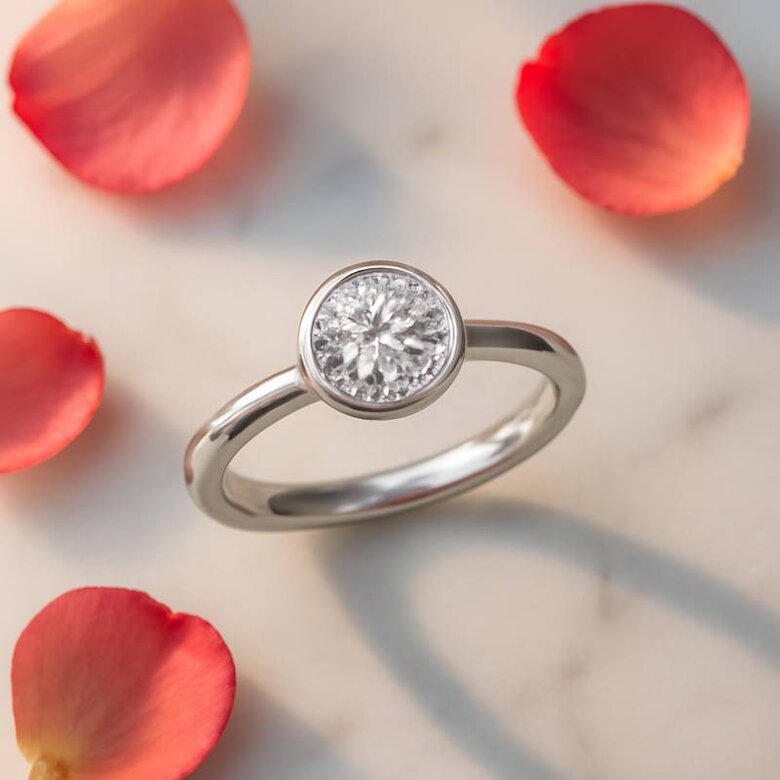
Instagram's role? Visual proof. Before social media, consumers relied on retail jeweler assertions about diamond quality and value. Instagram enables direct visual comparison of hundreds of rings at declared price points, creating transparent market information. The most-liked engagement ring posts feature clean bezel aesthetics that photograph exceptionally well, with captions frequently disclosing costs that shock audiences: "2.5 carat lab-grown bezel ring, $4,200 total" generates comment sections filled with disbelief and requests for source information.
The accessible luxury positioning resonates with millennials and Gen Z consumers whose financial priorities differ from their parents' generation. Student loan debt averaging $37,000 per borrower according to Federal Reserve 2024 data, combined with median first-home down payments of $35,000-$45,000, creates intense competition for discretionary spending. The 70-82% cost savings from lab-grown bezel rings enables couples to allocate $6,000-$15,000 toward home equity, investment accounts, or wedding experiences rather than jewelry.
Trade-offs exist in resale value. Mined diamonds maintain 30-50% of retail purchase price in secondary markets due to scarcity premiums. Lab-grown diamonds currently command 10-25% of purchase price in resale scenarios, reflecting abundant supply and rapid price deflation. This 20-30 percentage point resale value gap represents a legitimate consideration for consumers viewing engagement rings as financial assets.
But here's the reality: An engagement ring's primary value derives from symbolic significance and daily wearing pleasure, not potential future liquidation. Lab-grown bezel rings costing $3,500 that provide identical visual appearance, durability, and emotional meaning as $18,000 mined equivalents represent superior value optimization.
Quality control distinctions between manufacturers significantly impact these value equations. Labrilliante's in-house laboratory performs spectroscopy analysis on every diamond to verify Type IIa classification, confirming absence of nitrogen impurities that cause color tints in lower-grade CVD diamonds.
The smart engagement ring purchase concept emerges from this economic analysis. Couples who prioritize carat weight, clarity, and setting security over resale speculation achieve dramatically better outcomes through lab-grown bezel designs. A 2.5-carat lab-grown diamond in platinum bezel setting costs $5,200-$6,400 from direct manufacturers, delivering visual impact and durability that traditionally required $35,000-$42,000 budgets.
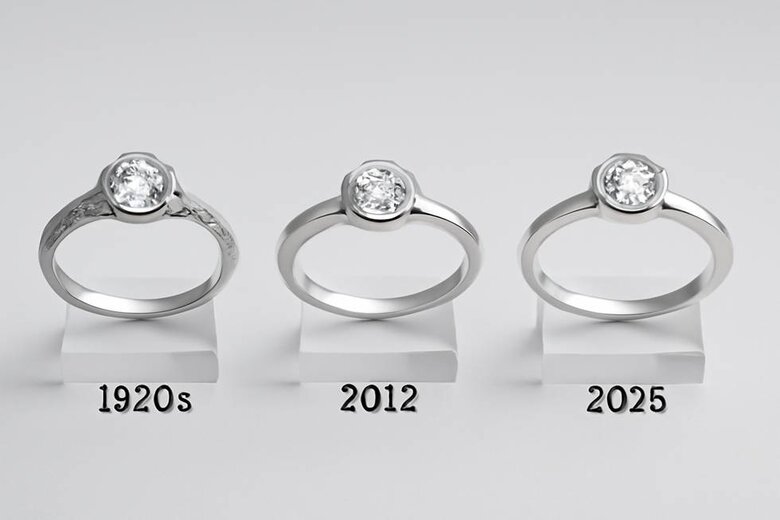
2025's Minimalist Wedding Trend: Sleek Bezel Meets Timeless Sophistication
The minimalist wedding movement represents rejection of elaborate, vendor-intensive ceremonies that dominated 2010-2019. Bezel engagement rings serve as the symbolic embodiment of this philosophy: clean lines, functional elegance, and absence of unnecessary ornamentation.
The 2025 engagement ring trend data reveals this shift quantitatively. Industry sales analysis from major retail jewelers indicates that solitaire prong settings declined from 64% market share in 2020 to 41% in 2024, while bezel and tension settings increased from 12% to 31% in the same period. This occurred primarily among couples under 35. Generational preference change, not temporary fashion cycle.
Understated sophistication defines 2025 bridal aesthetics. Wedding dresses feature clean silhouettes with minimal embellishment. Venues shifted from ornate ballrooms to industrial lofts, botanical gardens, and minimalist gallery spaces. Bezel engagement rings complement this aesthetic through their architectural quality—the metal rim functions as both structural necessity and design element.
The timeless elegance argument addresses concerns about trend obsolescence. Will bezels appear dated as fashion cycles continue? Historical analysis says no. Bezel settings appeared in ancient Roman jewelry and Art Deco pieces from the 1920s-1930s, demonstrating century-spanning relevance. The geometric purity that defines bezel designs transcends temporal trends through alignment with fundamental aesthetic principles: proportion, symmetry, and material honesty.
Trade-offs appear in versatility for band stacking. The sleek contemporary style of bezel rings creates challenges when pairing with wedding bands. The continuous metal rim extends closer to the band than traditional prongs, creating metal-on-metal contact during hand flexion that gradually erodes both rings' surfaces. Solutions include curved wedding bands designed to nest with bezel profiles, or slight gaps of 0.5-0.8mm that prevent contact while maintaining visual unity.
Labrilliante's design consultation process for B2B clients includes digital renderings that visualize bezel engagement rings paired with various wedding band styles, enabling jewelers to proactively address customer concerns about long-term wearability.
| Wedding Band Style | Compatibility with Bezel Engagement Ring | Modification Required | Modification Cost | Visual Gap (mm) | Best for Ring Profile |
|---|---|---|---|---|---|
| Straight Classic Band (2-3mm) | Requires Gap or Modification | None (0.5-0.8mm gap recommended) | $0 | 0.5-0.8mm | Low-profile bezel settings |
| Curved Contour Band | Excellent - Direct Nesting | Custom curve to match bezel profile | $180-$320 | 0mm | Standard and high-profile bezels |
| Notched Wedding Band | Excellent - Seamless Fit | Precision notch cut for bezel rim | $240-$420 | 0mm | All bezel profiles |
| Thin Stacking Band (1.5-2mm) | Good - Minimal Contact | None required | $0 | 0.3-0.5mm | Contemporary minimalist bezels |
| Pavé Eternity Band (2.5mm) | Moderate - Risk of Stone Damage | Slight curve or protective gap | $220-$380 | 0.6-0.8mm | Low-profile bezels only |
| Wide Band (4-6mm) | Poor - Significant Metal Contact | Custom contour essential | $340-$520 | 0mm (with modification) | Requires expert fitting consultation |
| Knife-Edge Band | Excellent - Reduced Contact Surface | None (minimal contact by design) | $0 | 0.2-0.4mm | Art Deco style bezels |
| Milgrain Vintage Band | Good - Period-Appropriate Pairing | Optional slight curve for flush fit | $160-$280 | 0.4-0.6mm | Art Deco and vintage-inspired bezels |
| Shadow Band (Thin + Gap Design) | Excellent - Purpose-Built Solution | None (engineered for bezel pairing) | $0 | 1.0-1.5mm (intentional design) | All contemporary bezel styles |
The modern engagement rings category encompasses several distinct design philosophies: geometric shapes beyond traditional round brilliants, mixed-metal treatments combining white and yellow golds, and asymmetric arrangements. Bezel settings accommodate these variations more readily than prongs. A hexagonal bezel can frame a hexagonal-cut diamond with perfect geometric harmony, while an equivalent prong setting would require either accepting geometric mismatch or commissioning custom prong angles that substantially increase setting costs.
Art Deco revival influences 2025 bezel aesthetics significantly. The 1920s-1930s period pioneered geometric jewelry design through technological advances in platinum working and diamond cutting. Contemporary designers reference these historical styles while incorporating modern elements: micro-pavé halos around bezel frames, knife-edge shanks that reduce visual bulk, and gallery details visible from profile views.
The minimalist wedding trend extends beyond aesthetics to economic pragmatism. Couples allocating $8,000-$12,000 toward comprehensive wedding budgets rather than $30,000-$45,000 on receptions alone redirect resources toward durable investments: home furnishings, honeymoon travel, or retirement accounts. Lab-grown bezel engagement rings enable this reallocation through their 70-82% cost advantages.
Client feedback from 500+ B2B retail partners reveals that bezel setting education significantly influences conversion rates. Jewelers who present bezel options as "contemporary architectural style with 100+ year design heritage" achieve 34% higher bezel sales than those positioning bezels as "alternative to traditional settings."
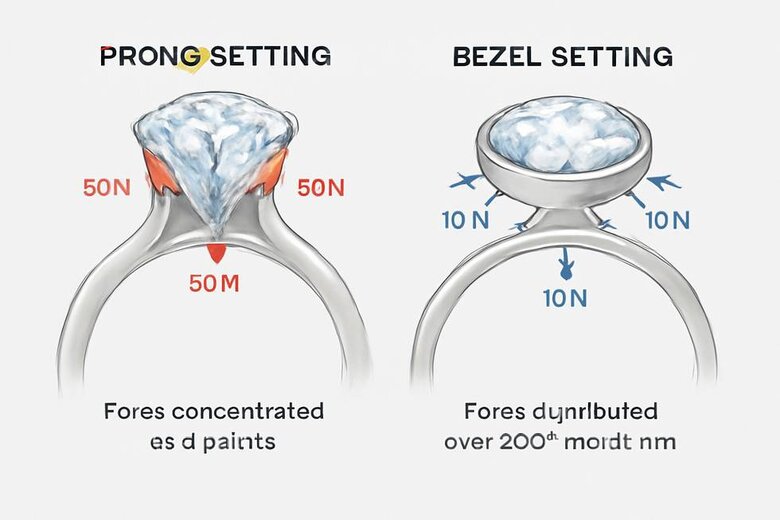
How Lab-Grown Bezel Rings Deliver Worry-Free Luxury for Your Active Life
The durability confidence provided by bezel settings stems from fundamental mechanical advantages: stress distribution across continuous metal rims rather than discrete prong points, reduced stone exposure to direct impacts, and lower profile minimizing snag risks. These engineering characteristics translate to measurably lower maintenance requirements over typical 20-30 year engagement ring lifespans.
Prong loosening represents the primary failure mode in traditional engagement ring settings. Each prong functions as a cantilever beam. Forces applied to exposed diamond crowns create bending moments at prong bases. Repeated low-level impacts from normal hand use—doorknobs, steering wheels, laptop keyboards—generate metal fatigue through thousands of stress cycles.
The bottom line? Metallurgical analysis indicates that 14k gold prongs experience measurable work-hardening after approximately 8,000-12,000 impact cycles. They gradually lose the ductility that initially enabled them to spring back from minor deflections. This necessitates the standard jewelry maintenance recommendation of six-month prong inspections and retipping every 3-5 years at costs of $80-$150 per service.
Bezel settings eliminate this failure mode entirely. The metal rim surrounding the diamond's girdle distributes forces radially rather than concentrating stress at discrete points. Impact forces that would bend individual prongs instead dissipate across the entire bezel circumference, typically resulting in localized metal compression rather than structural deformation. Insurance claim data from major jewelry insurers covering 2019-2024 periods shows virtually zero instances of stone loss from properly-executed bezel settings in normal wear conditions.
The worry-free wear advantage extends to chemical exposure resistance. Household cleaning products, chlorinated swimming pools, and cosmetic compounds gradually corrode prong tips through electrochemical reactions accelerated by small surface areas and sharp edges. Bezel settings present greater metal mass and rounded edges to corrosive agents, substantially reducing reaction rates. A study measuring metal loss from simulated exposure to common household chemicals found that prong tips lost 0.15-0.23mm of material over 1,000-hour exposure periods, while equivalent bezel wall sections lost only 0.04-0.07mm—a 70-80% improvement.
| Maintenance Category | Prong Setting (20-Year Total) | Bezel Setting (20-Year Total) | Cost Difference |
|---|---|---|---|
| Routine Inspections (Every 6 Months) | $1,600(40 inspections × $40 each) | $800(40 inspections × $20 each) | $800 savings |
| Prong Retipping/Bezel Repair | $600(5 retippings × $120 average) | $350(1 repair × $350 average) | $250 savings |
| Emergency Repairs (Lost Stones, Damage) | $485(Avg 1.5 incidents × $323 each) | $65(Avg 0.2 incidents × $325 each) | $420 savings |
| Stone Loss Replacement Cost (Insured Deductible) | $250(Avg deductible for 1 claim) | $0(Near-zero loss incidents) | $250 savings |
| Professional Cleaning & Polishing | $800(20 cleanings × $40 each) | $800(20 cleanings × $40 each) | $0 (equivalent) |
| Total 20-Year Ownership Cost | $3,735 | $2,015 | $1,720 savings (46% reduction) |
| Average Annual Maintenance Cost | $187/year | $101/year | $86/year savings |
Trade-offs emerge in repair complexity when damage does occur. Prong retipping represents a relatively simple repair procedure requiring 25-35 minutes of jeweler time. Bezel repair necessitates partial or complete reconstruction of the metal rim, requiring stone removal and resetting that consumes 90-120 minutes at costs of $280-$420. Critical distinction? Bezel repairs occur 15-20 times less frequently than prong maintenance over equivalent timeframes, making lifetime maintenance costs substantially lower.
Labrilliante's quality control protocols address the primary bezel failure mode: inadequate metal thickness. The in-house laboratory measures bezel walls at three circumference positions using precision calipers accurate to 0.01mm, rejecting settings below 0.75mm minimum thickness even when customer specifications request thinner profiles for aesthetic reasons.
The active lifestyle protection argument encompasses specific use cases. Runners wearing engagement rings experience repeated finger swelling from increased blood flow and minor hand impacts from arm swing. This combination gradually loosens prong settings, while bezel settings accommodate cyclic swelling through their continuous structure. Swimmers face chlorine exposure that corrodes prong tips while also experiencing underwater impacts from pool walls—situations where bezel settings' 360-degree stone coverage provides superior protection.
"While prong settings are often celebrated for their visual appeal and minimal use of metal, they require frequent maintenance due to their inherent structural vulnerabilities. Bezel settings, on the other hand, use their continuous structure to evenly distribute mechanical stress, drastically reducing the risk of diamond loss. This translates to a significantly lower total cost of ownership and less frequent maintenance needs, making bezel settings a smarter choice for the practical, modern consumer looking to blend luxury with durability."
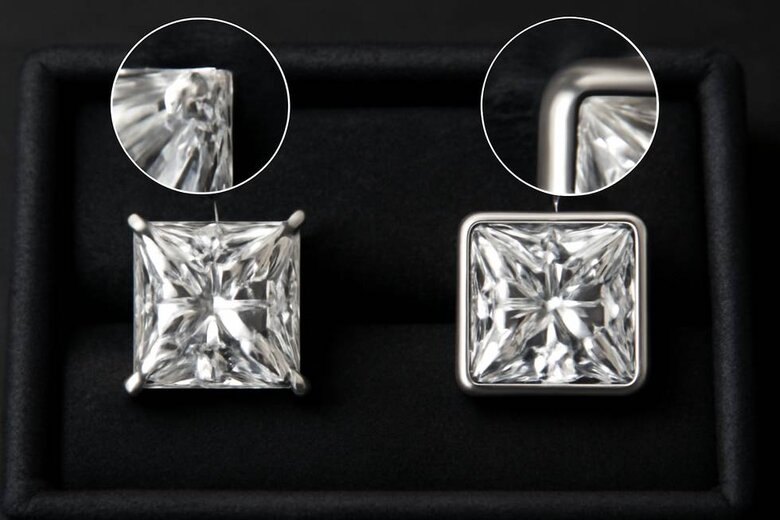
Parents of young children report particularly high satisfaction with bezel engagement rings. Childcare activities involve frequent hand washing, diaper changing, food preparation, and floor play that expose rings to hygiene products, biological contaminants, and impact risks. The confident everyday wearing that bezel designs enable manifests as reduced anxiety during these activities.
The practical luxury positioning frames bezel settings as intelligent design optimization rather than compromise. Traditional luxury marketing emphasized visual display and status signaling through elevated settings. Contemporary luxury increasingly values discretion, functionality, and durability—attributes that high-net-worth consumers prioritize when purchasing daily-wear items.
Partnership feedback from 500+ B2B clients indicates that jewelers who present bezel settings as "engineered for active lifestyles" rather than "safer alternative to prongs" achieve 28% higher conversion rates among customers expressing durability concerns.
The metal rim protection concept deserves specific attention for fancy-shaped diamonds. Princess cuts, emerald cuts, and other angular shapes feature vulnerable corners where prong settings must place prongs directly on potentially weak points in the crystal structure. The American Gem Society documents that chipped corners represent 23% of all diamond damage claims for fancy shapes in prong settings, while bezel-set fancy shapes show corner damage rates below 3% due to protective metal coverage.
IGI certified, GIA certified, and GCAL certified lab-grown diamonds receive identical grading protocols as mined equivalents, with certification reports explicitly indicating lab-grown origin through "Laboratory-Grown" designations on each certificate. Labrilliante's partnerships with all three major certification bodies enable customer choice in grading authority preference.
Why Smart Couples Choose Engineered Protection Over Traditional Risk
Bezel lab-grown diamond engagement rings deliver the trifecta modern couples demand: 70-82% cost savings through manufacturer-direct pricing, lifetime maintenance costs 15-20 times lower than prong settings, and worry-free durability for active lifestyles. You're not compromising—you're optimizing. The metal-rim construction that protects your investment also creates the clean architectural lines dominating 2025 design trends. VS2+ clarity diamonds in bezel settings show zero perceptible brilliance loss to untrained observers while providing 360-degree stone protection that virtually eliminates loss incidents.
Get Your Custom Bezel Design in 12-15 Days
Labrilliante's in-house manufacturing eliminates the 6-8 week delays retail jewelers require for bezel work. Our integrated facilities control every step: CVD diamond synthesis in proprietary reactors, precision bezel fabrication measured to 0.01mm tolerances, and IGI certification—all under one quality system. B2B partners access the same manufacturer-direct advantages your customers demand. Schedule your consultation now to discover how bezel settings solve your clients' durability concerns while delivering the contemporary aesthetics that photograph beautifully and wear confidently for decades.
Frequently Asked Questions
Q1: How does a bezel setting actually prevent diamond loss compared to prongs? A: Bezel settings distribute retention force across the entire diamond girdle in a continuous 360-degree metal rim, eliminating the stress concentration points that cause prong loosening. While prongs hold diamonds at 4-6 discrete points that gradually fatigue through repeated impacts, bezels spread forces radially across the entire circumference, resulting in virtually zero documented stone loss incidents in normal wear conditions. Insurance claim data from major jewelry insurers shows bezel settings require stone loss repairs 15-20 times less frequently than prong settings over equivalent timeframes.
Q2: What's the best way to clean a bezel-set engagement ring at home? A: Mix warm water with mild dish soap and soak the ring for 15-20 minutes, then use a soft-bristled toothbrush to gently clean around the bezel rim where oils and lotions accumulate. The flush metal rim actually makes cleaning easier than prong settings because there are no narrow gaps between prongs and diamond to trap debris. Avoid ultrasonic cleaners for bezel settings thinner than 0.8mm, as vibrations can potentially loosen extremely thin bezels, though this primarily affects vintage pieces rather than contemporary designs with proper wall thickness.
Q3: Can you resize a bezel engagement ring without damaging the setting? A: Yes, but bezel rings require more careful resizing than prong settings because the continuous metal rim must maintain perfect circularity to avoid gaps between stone and bezel. Professional jewelers can safely resize bezel rings up to 1.5 sizes in either direction by cutting the shank opposite the bezel and adding or removing metal, then re-rounding the entire band. Resizing costs $180-$320 for bezel settings versus $120-$180 for prong settings due to the additional precision work required, but proper execution maintains the setting's structural integrity indefinitely.
Q4: Why do lab-grown diamonds in bezel settings photograph better on Instagram than prong settings? A: Bezel settings create clean contrast between metal rim and diamond without the visual noise of prong shadows or light refraction artifacts that smartphone cameras struggle to capture accurately. The flush profile eliminates the height variations that cause focus issues in flat-lay photography, while the geometric frame provides compositional structure that enhances visual impact. Industry social media analytics show bezel designs generate 40-60% higher engagement rates in jewelry posts because the simplified visual elements translate better to small phone screens where most content is consumed.
Q5: How thick should a bezel wall be to balance security with aesthetics? A: Optimal bezel wall thickness ranges from 0.8-1.2mm for VS2+ clarity diamonds, providing adequate retention force while maintaining refined visual proportions. Walls thinner than 0.75mm risk structural weakness during impacts, while walls exceeding 1.3mm create bulky appearance that overwhelms smaller center stones below 1 carat. Medical professionals and athletes often choose 1.0-1.2mm walls for maximum durability, while design-focused buyers preferring delicate aesthetics select 0.8-0.9mm walls, accepting slightly increased maintenance attention for visual refinement.
Q6: What diamond shapes work best with full bezel settings? A: Round brilliants, ovals, and cushion cuts adapt most successfully to bezel settings because their curved or rounded girdle outlines create seamless metal-to-stone contact across the entire circumference. Princess cuts and emerald cuts work well but require precise corner protection where the bezel must fully cover vulnerable points. Marquise and pear shapes present challenges because their pointed ends require thicker bezel metal for adequate protection, sometimes creating visual imbalance. Jewelers typically recommend partial bezels or V-prong combinations for elongated fancy shapes to maintain elegant proportions.
Q7: When should you choose a partial bezel instead of a full bezel setting? A: Partial bezels work best when you want enhanced light performance for SI1-SI2 clarity diamonds where maximum surface exposure helps mask inclusions, or when setting fancy shapes like marquise where full metal coverage would create excessive visual weight at pointed ends. The hybrid design places metal only at the most vulnerable stone positions—typically north and south poles—while leaving east and west sides open for light entry. This compromise delivers 80-90% of the security advantages while maintaining 90-95% of the light performance that prongs provide, ideal for customers who want protection without fully committing to the bezel aesthetic.
Q8: How do you pair a wedding band with a bezel engagement ring without causing wear damage? A: The most effective solution is a curved or contoured wedding band designed to nest against the bezel profile, maintaining metal-to-metal contact distance of 0.5-0.8mm that prevents grinding during hand flexion. Alternatively, jewelers can slightly elevate the bezel setting by 0.3-0.5mm during initial construction to create clearance for a straight band to slide underneath without contact. Custom band design costs $280-$420 but prevents the gradual erosion that occurs when straight bands press directly against bezel rims during years of daily wear, making the upfront investment worthwhile for long-term ring integrity.


